Ashes 2021-22: Follow all the latest news ahead of the first Test between Australia and England
There is a major power shift happening within the men’s Test team, and the fortunes of two players in particular are linked like never before.
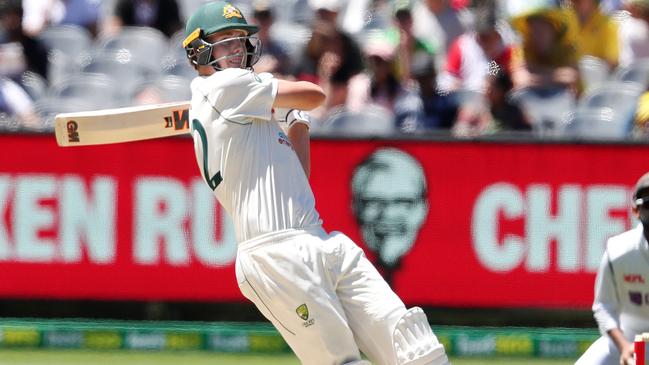
Cricket
Don't miss out on the headlines from Cricket. Followed categories will be added to My News.
For more than a century they have been the invisible men of Australian cricket with half a title and limited power … shadow dwellers neither lauded in victory nor blamed for defeat.
The VC may be an exalted honour in the army when it stands for the Victoria Cross but when the same letters appear after your name in Australian Test team lists it could well be for Very InConspicuous as much as vice-captain.
All that is about to change. With the seemingly inevitable appointment of Pat Cummins as Australia’s captain and Steve Smith the hot favourite to become his deputy, a major power shift is upon us.
Suddenly the vice-captain’s position, all but invisible for so many generations, is about to become more important than it has been in the 144 year history of Australian Test cricket.
If Cummins is to succeed as a Test skipper his deputy has to be a major success story as well. These men will rise or fall together. Their fortunes are linked like never before.
If Cummins is to triumph in the Ashes and the three brutal Test tours to India, Sri Lanka and Pakistan which await over the next two years you can bet he will say at the end of it … “I must say I could not have done it without (insert vice-captain).’’
Australia has never spent as much time assessing the performances of its vice-captains or even deciding what it wanted from the role as it should have.
It’s no coincidence the best vice-captains – Adam Gilchrist, Brad Haddin and Ian Healy among them – were wicketkeepers who had no desire to be Test captain, nor did batsman Geoff Marsh who might have been the best of the lot.
They were never like those scheming deputy chief executives happy to see the share price running down before they took over and suddenly bound to life.
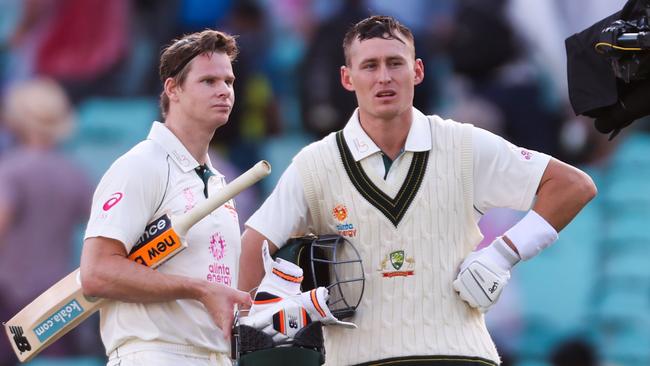
West Indian captaincy great Clive Lloyd got the best out of his deputies by using the line “the more you do for me the more I can do for you.’’
If Smith is appointed vice-captain the most challenging part of the job could well be simply coping with the disappointment of missing the big job, but the consoling factor is he likes Cummins and, by working with him, his role would be more vibrant than most deputy leaders.
Oddly enough, one of the first places Australian should look to find out what works in a captain-vice-captain relationship is to view ones that haven’t.
To his credit, Michael Clarke, an outstanding captain, admitted to struggling as a vice-captain to Ricky Ponting for several reasons.
He agreed with Ponting’s criticism that he became too emotionally affected by his own performances to the point where it affected his ability to think of others as a vice-captain has to do.
He also confessed that because he did not agree with some of Ponting’s captaincy ideas he found it hard to “fake’’ his commitment to them.
Australia has found outstanding vice-captains harder to find than outstanding captains.
Two men working for the same cause. It sounds so simple but is, in fact, so complex.
It’s a hard formula to crack but this, as much as any time, Australia must make it work.
HOW GREEN CAN BE OUR ULTIMATE STOKES ANTIDOTE
Ben Horne
As Ben Stokes put England on cloud nine at Headingley in 2019, Cameron Green was flying even higher.
About to board a flight home from an Australian under-19s tour in India, Green checked his phone as he took his seat and felt assured that Australia would have the Ashes won before meal trays were even served.
“I checked the score and England were nine down needing over 100, so I was like, ‘OK, you beauty. They’ll get the win. They’ve won the Ashes. I can’t believe they’ve done that’.”
But when his plane landed in Singapore, Green’s jaw hit the floor as his phone exploded with news of Stokes’ match-winning heroics.
“Everything was blowing up,” he recalled.
Australia had no answers that day, but as the Stokes rematch looms at the Gabba, there is belief that in Green – touted as a once-in-a-generation all-rounder – it has the antidote.
“I can’t see why he can’t be a similar style player to Ben Stokes,” said Steve Waugh, who endured the torture of that day from inside the Australian coaching box in Leeds.
Play Australia’s best fantasy cricket game – KFC SuperCoach BBL. Sign up now at supercoach.com.au
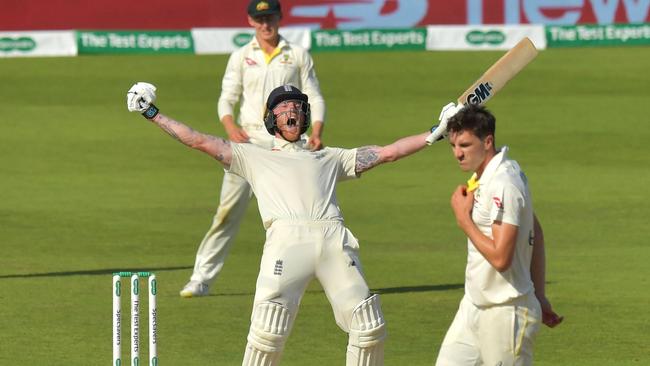
“ … It’s obvious. You can see (Green’s) got star potential … once he knows his game and gets his confidence and feels comfortable, he’s going to flourish at this level.”
Green did not take a wicket in his debut Test series against India last summer, but the 22-year-old insists he will walk into the Ashes furnace a more confident bowler because of it.
Asked what he feels is the greatest strength of his opposite number Stokes, Green simply said: “The presence he has.”
Green is 1.98m tall, but perhaps the most important lesson he learnt last summer was that in Test cricket, “presence” is something that must be earned.
“Obviously it’s not how you like it to go, you would rather take a wicket. But I’m actually kind of glad it happened,” Green said.
“It actually gave me a really clear idea of what I wanted to bring next time. It showed clearly where my bowling was at the time and that it wasn’t really up to the standard of Test cricket.
“It’s put me in a clear headspace for what I needed to improve on to get batsmen out and I definitely feel like I’m in a much better place now. I think presence comes with confidence.”
What is already part of Green’s ever-growing “presence” as a potential superstar, is he has a temperament for Test cricket that cannot be taught.
National selector George Bailey could hardly believe it when Green turned up for his first ever Australia A match last summer – literally his audition to make the Test side – without his kit bag.
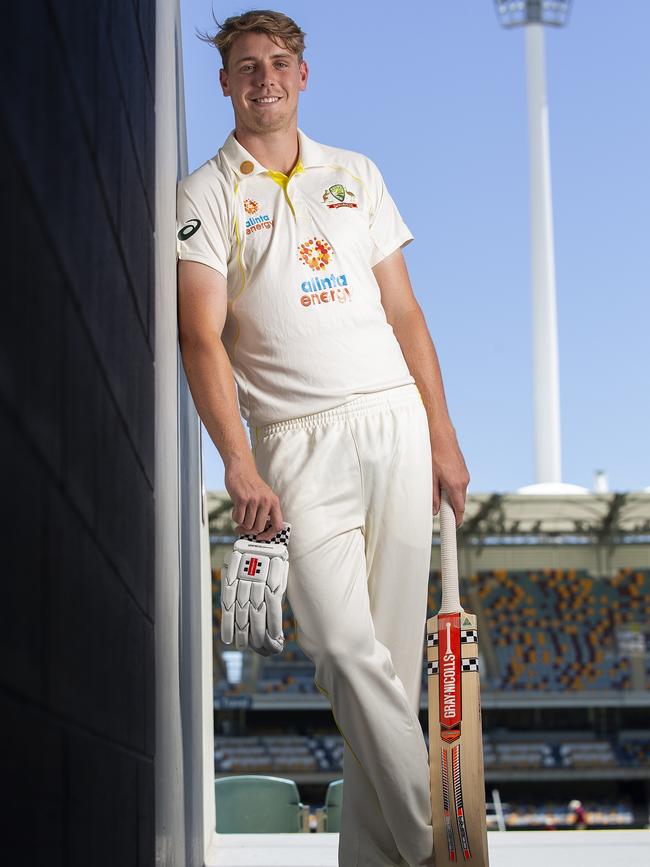
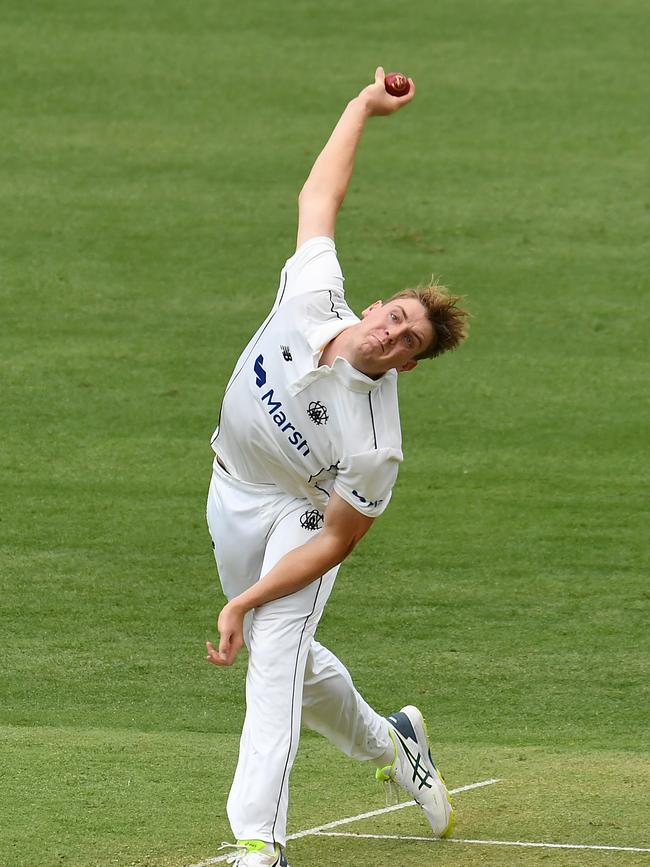
Luckily, Australia A won the toss and bowled, because otherwise Green might have been wearing borrowed pads barely reaching his knees.
“I had been with the Australian squad that had played the one-dayer in Canberra and then headed back up to Sydney to play the Aussie A game at Drummoyne,” Green said.
“My kit was coming up in the Australian van and I just assumed they would have organised the kit to be brought to the Aussie A game, but obviously not.”
Flustered much? Green went out against an almost-Test strength Indian line-up, taking 2-12 with the ball and smashing 125 with the bat in a man-of-the-match performance.
“I’m sure a few blokes would have got rattled by something like that happening in their first Aussie A game, but I wasn’t too stressed,” Green said.
Unlike most emerging stars, Green doesn’t really have a cricketing idol, with his father Gary the single biggest influence on his career.
Gary, a second grade all-rounder who still plays over-50s cricket in Perth, submitted himself to two lots of two-week quarantine in Western Australia last summer so dedicated was he to following his son around the country on his debut Test journey.
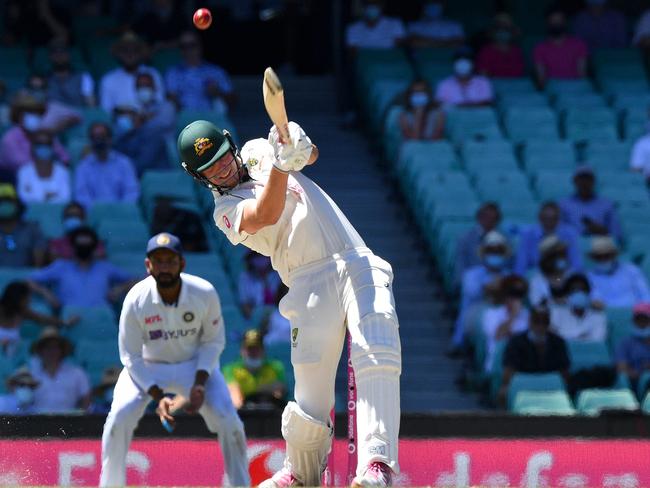
“Play in the V until you’re on 33,” was one of many cricketing rules Gary Green encouraged his son to follow as a young batsman, “but I won’t embarrass myself to recite them all”.
However, Gary believes central to Cameron’s success has been his commitment to routine.
As one of the tallest batters in the history of the game, one of the most critical of those routines is a technique based on “batting short”.
“He hit a lot of balls when he was younger and when he started to grow taller (in years 11 and 12) he just had to adjust to that different part of his game,” Gary said.
“We talked a lot about most of the best batters in the history of cricket are quite short, so he’s got to try to bat like a short batter. Keep that low centre of gravity. As he has grown he’s maintained that discipline to try and bat low and just try and break the mould really of the difficulty tall batters have had in the history of the game.”
Green’s sister is currently in Texas playing US College basketball, and Green was a talented basketballer and Australian rules star in his youth.
In so many ways there is already enormous “presence” about Green, and West Australian teammate and fellow all-rounder Marcus Stoinis believes the world is about to see it.
“I played against him in his first Shield game when he smacked Victoria around the park at the WACA,” Stoinis said.
“He was pulling Jimmy Pattinson for six, which not many players do, let alone a first-gamer.
“He is a superstar. I think he’s going to have maybe a 15-year career for Australia. I couldn’t talk higher about him.”





